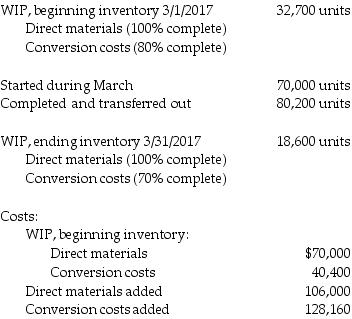Verer Custom Carpentry manufactures chairs in its Processing Department. Direct materials are included at the inception of the production cycle and must be bundled in single kits for each unit. Conversion costs are incurred evenly throughout the production cycle. Inspection takes place as units are placed into production. After inspection, some units are spoiled due to undetectable material defects. Spoiled units generally constitute 4% of the good units. Data provided for March 2017 are as follows:
What costs would be associated with normal and abnormal spoilage, respectively, using the FIFO method of process costing? (Round any cost per unit calculations to the nearest cent.)
Definitions:
Budgeting Formulas
Mathematical equations used to plan and allocate financial resources in an organized manner for business operations.
Planning Budget
A financial plan that estimates future revenues, expenses, and resources needed for a specific time period, helping manage resources effectively.
Revenue Variances
The differences between actual revenue generated and the expected (or budgeted) revenue over a specific period.
Spending Variances
Differences between the budgeted or standard cost of production and the actual cost incurred.
Q19: Which of the following is the correct
Q26: All products yielded from joint product processing
Q38: Which of the following describes who the
Q53: Stefan Ceramics is in the business of
Q63: Early inspections can _.<br>A) prevent any further
Q101: A general rule in capital budgeting is
Q115: The Swivel Chair Company manufacturers a standard
Q123: For each of the following (actual real-world
Q136: Which of the following best describes conformance
Q142: Assembly department of Zahra Technologies had 200